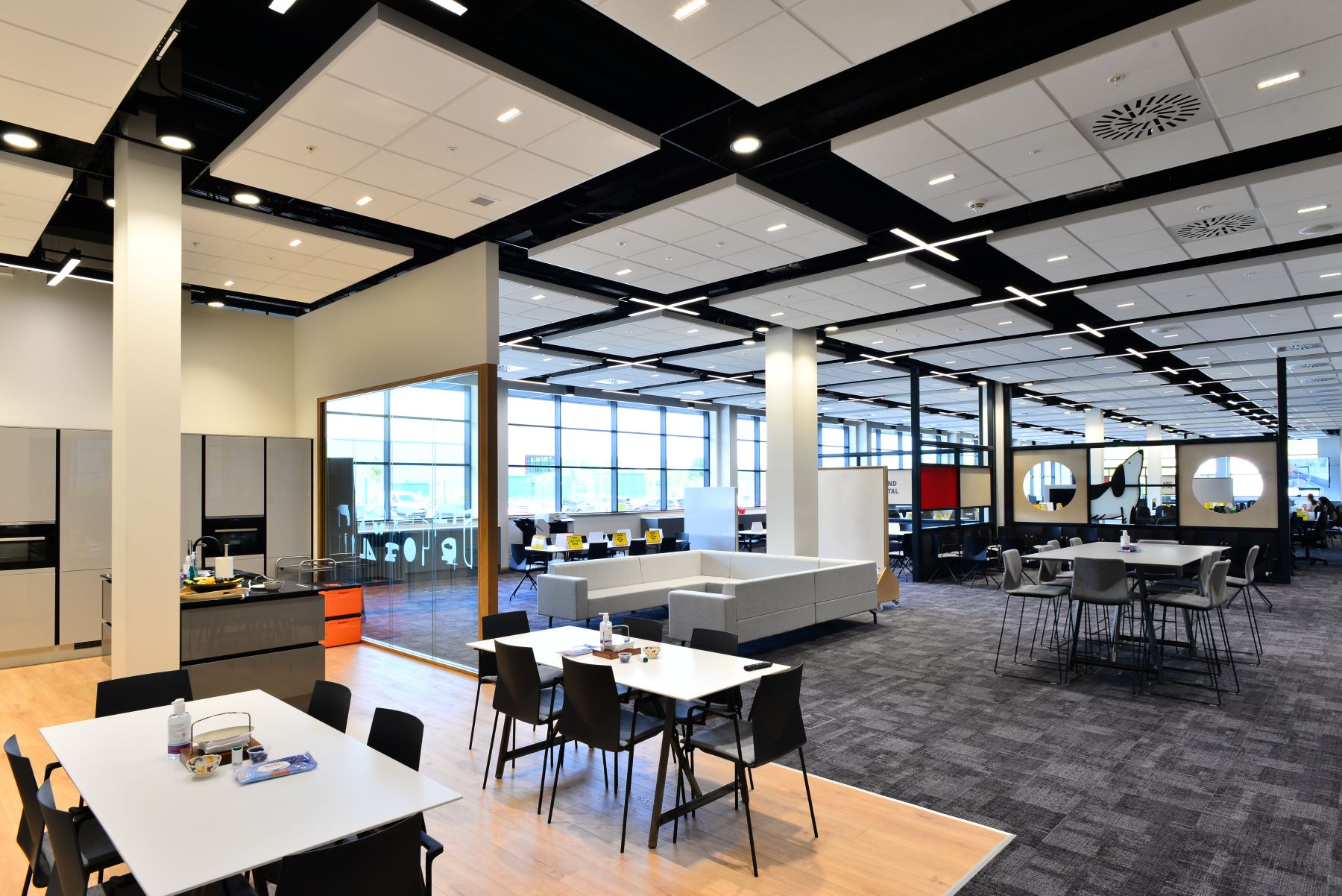Breaking through the productivity ceiling
Recognising the impact of physical environments on the productivity and job satisfaction of employees, office designers are exploring new ways to enhance their working experience. Here we look at the central role of ceilings in the process.

Research has proved what we’ve known all along: that our surroundings affect our mood. It can also affect our productivity at work.
An extensive survey by the British Council for Offices in 2014 identified the factors that most irritated office workers: noise, poor lighting and temperature control, a lack of fresh air and a shortage of places to relax. Physical environmental factors such as these are closely linked with staff morale, performance and even job satisfaction. And as employee costs can account for up to 90% of operational budgets, it’s clear that even small improvements in workforce productivity will have significant commercial benefit.
This realisation, together with a growing awareness of workplace mental health, has led to building ‘wellness’ becoming a priority for office designers and business owners, many of whom have adopted the concept within their business strategy.
With this has come a whole new generation of ideas and approaches designed to promote the cognitive, emotional and physical aspects of human health. For example, the concept of ‘resimercial’ blends residential and office interiors to create more familiar and comforting spaces, while biophilic design looks to integrate the natural world into the office environment using organic materials and plants. Other terms include authenticity, which reflects a wider business commitment to greater transparency and genuine human contact, and essentially means delivering more open and user-centric environments.
All of these really come under the generic concept of ‘experience driven’ spaces, which is focussed on creating office spaces that encourage more interaction and well-being. Examples include everything from the introduction of games rooms and jogging tracks through to relaxation areas and even kitchens. These all bring people together, encouraging interaction and creating a more sensorial office experience.
As people are at the centre, this is driving a ‘user-first’ design approach which mixes demographics and psychographics. In other words, designers consider the age, gender, working styles and attitudes and interests of the target market, in order to better meet their needs. In this way they can ensure that buildings achieve their full potential, by ensuring that people fulfil theirs too.
Positioned above everything, and accounting for a significant surface area of any office space, ceilings have a big part to play in helping reach this potential. As an example, thanks to the ‘cathedral effect’, high ceilings are believed to inspire creativity. Conversely, lower ceilings are thought to focus the mind and help with tasks demanding concentration and accuracy. The simple positioning of a ceiling can therefore impact on mood and productivity, and that’s without considering how the specific properties of the ceiling itself can impact on light, noise and air quality.
Indoor air quality is typically measured by CO2 levels and the presence of volatile organic compounds (VOCs) such as ozone and allergens. Given off by many construction materials some VOCs are toxic and potentially dangerous to humans, so specifying low or no-VOC ceiling solutions (E1) can make a positive contribute to office health. Raised ceilings help here too, increasing stratification which also improves air quality.
Ceiling systems can also help control noise, widely identified as an office villain. Tiles can be used to absorb or attenuate sound and, complemented with baffles, rafts and canopies, can be used to customise space and create different acoustic zones – for example, aiding hearing for students in schools, or offering calm and privacy in hospitals.
Equally, by increasing light reflectance to reduce the need for artificial light, ceilings can enhance visual comfort – another factor that’s linked to productivity and wellbeing.
Other ways that ceilings can contribute to wellness include fire protection, thermal insulation and hygiene, including anti-microbial treatment which clearly has special relevance today.
Last but not least, there’s one other important aspect of wellness that’s worth considering – and that’s the health of our planet. How sustainable is the material, and can it be easily recycled? Mineral ceiling tiles are 100% recyclable and some manufacturers operate a waste take back scheme to recycle tile off-cuts into new ceiling tile production, in some cases by more than 15,000,000m2 since 1999.
Suspended ceilings are long established as a Modern Method of Construction, with an offsite production element to reduce on-site waste. Installation of combinations of suspension systems can effectively reduce or eliminate ceiling tile waste on site.
As the Global Wellness Institute wrote in a 2018 report, “our homes, communities and surrounding environment [… determine up] to 90 percent of our health outcomes.” Ceilings have an important role to play in creating this ‘wellness’. Specifiers have the chance to reimagine what ceilings can do and use their creativity to transform lives, add value and actively promote happiness and productivity.